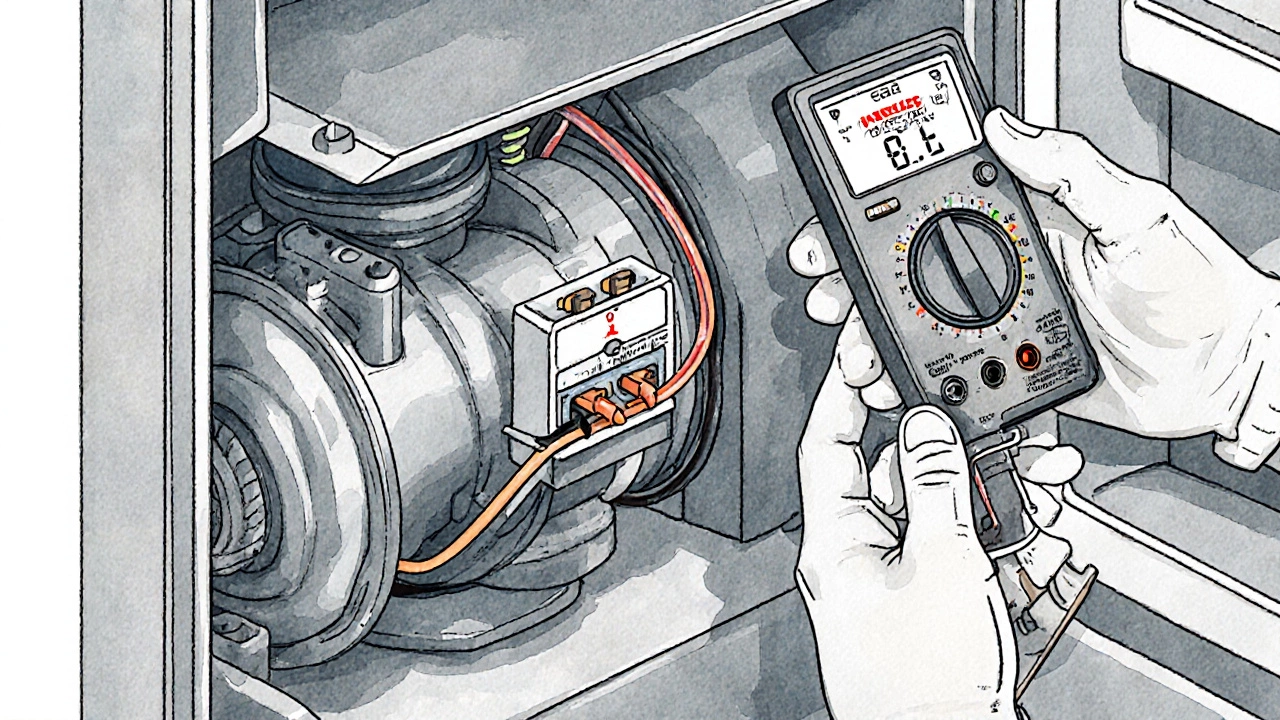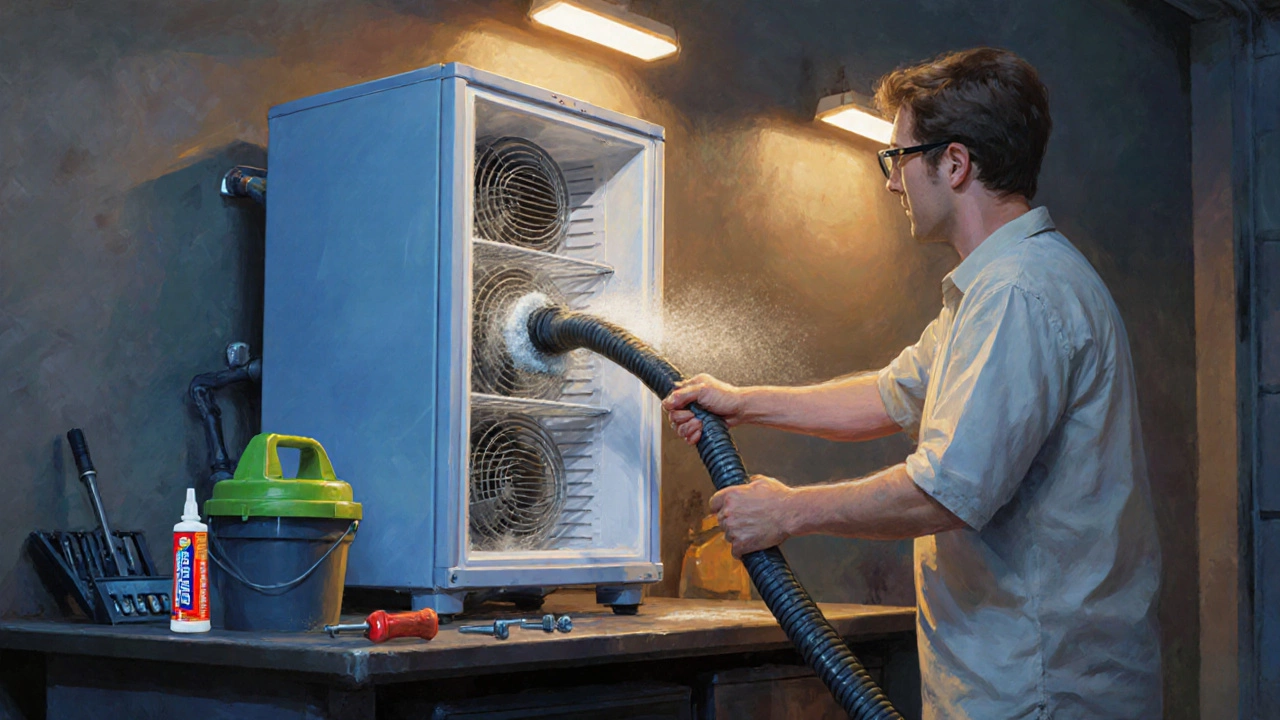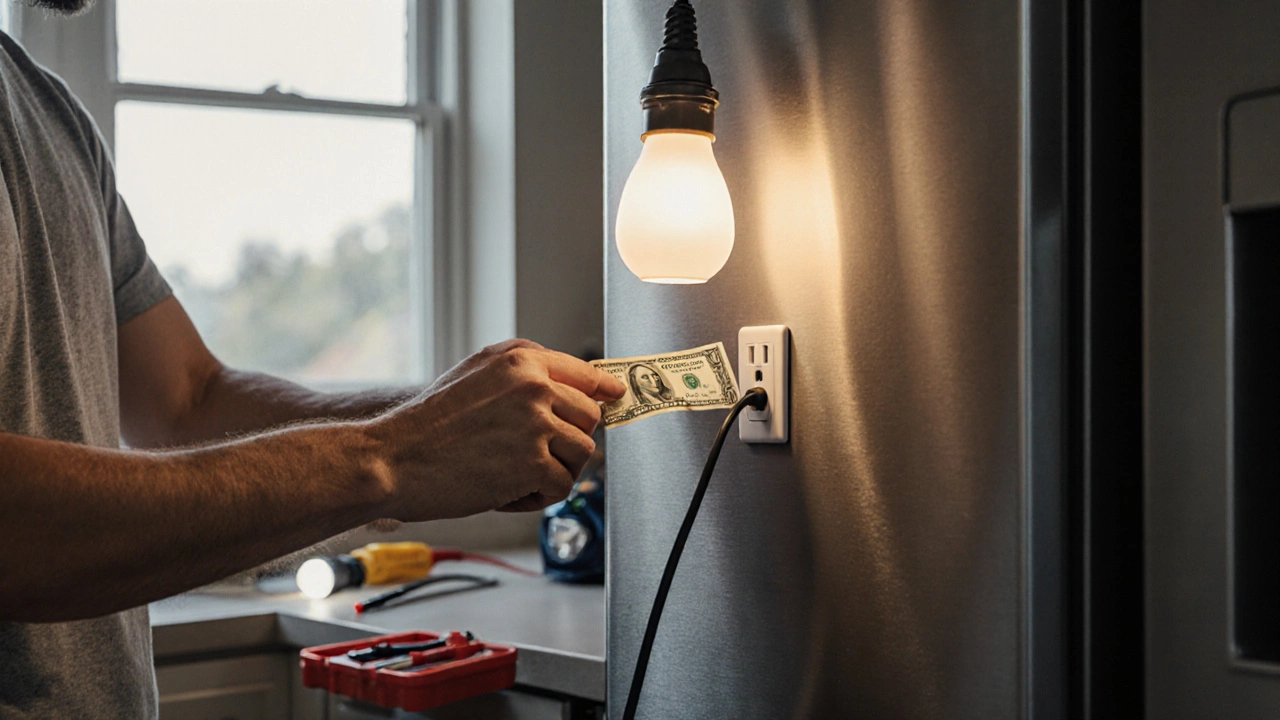Fridge Problem Diagnostic Tool
Identify Your Refrigerator Problem
Select the symptoms you're experiencing to determine likely causes and DIY difficulty level.
Diagnostic Results
Likely Cause:
DIY Difficulty:
Recommended Next Steps:
When a refrigerator stops keeping food cold, the first instinct is to call a pro. But many hiccups can be solved with a bit of curiosity and the right tools. Fridge repair is a hands‑on process that lets homeowners diagnose and fix common cooling issues without a service call. In this guide we’ll walk through the most frequent faults, show you how to test each component, and point out safety tips so you don’t end up with a bigger mess.
Quick Takeaways
- Check the power supply and door seal before opening the back panel.
- The compressor is the heart of the cooling cycle; a humming but cold‑less fridge often means a bad start relay.
- Thermostat and temperature sensor mis‑reads are easy fixes with a multimeter.
- Defrost timer issues cause ice buildup; a simple reset can restore normal operation.
- Always unplug the unit before handling the evaporator coil or refrigerant lines.
What You’ll Need
- Multimeter (digital preferred)
- Screwdriver set - Phillips and flat‑head
- Flashlight or headlamp
- Vacuum cleaner with hose attachment (for dust on fans)
- Reusable silicone grease (for door seals)
Step‑by‑Step Diagnosis
Start with the simplest checks and move inward only when the problem persists.
1. Power and Plug
Confirm the outlet works by plugging in a lamp. If the lamp lights, the outlet is fine. Next, look at the circuit breaker. A tripped breaker can look like a normal switch; reset it and listen for the compressor’s start‑up click.
2. Door Seal Integrity
A warped or cracked door seal (also called gasket) lets warm air sneak in, making the compressor work overtime. Close a dollar bill in the door - if it slides out easily, the seal needs replacement or a light coat of silicone grease.
3. Temperature Settings
Sometimes the thermostat is simply set too low or high. Most modern fridges have a digital display; set it to the manufacturer‑recommended 37°F (3°C) for the fridge and 0°F (‑18°C) for the freezer.
4. Test the Thermostat and Temperature Sensor
Locate the thermostat (often a small dial or a digital module) and the temperature sensor on the back wall. With the fridge unplugged, use a multimeter set to resistance (ohms). A functional thermostat typically shows a low resistance at low temperatures and high resistance at room temperature. If the reading stays constant, replace the part.
5. Inspect the Compressor
The compressor is a sealed metal canister that pressurizes refrigerant. A healthy compressor makes a low‑pitch hum. If you hear nothing or just a click, the start relay or overload protector is likely dead. Remove the relay (usually a small rectangular component on the compressor’s side) and test it for continuity. Swap it with a used one of the same rating - if the fridge kicks on, you’ve fixed the issue.
6. Check the Evaporator Coil and Fan
Inside the freezer compartment, the evaporator coil can collect frost over time. Excess ice blocks airflow, causing the fridge to warm up. Unplug, remove the back panel, and let the ice melt (or use a hair dryer on low). While you’re there, spin the cooling fan by hand; it should turn freely. Clean any dust with a vacuum hose.
7. Defrost Timer or Heater
Most units have an automatic defrost cycle controlled by a defrost timer. If the timer fails, the fridge stays in defrost mode and stops cooling. Locate the timer (often behind the temperature control panel) and manually advance it using a screwdriver. If cooling resumes, the timer is still functional; otherwise, consider replacement.
8. Look for Refrigerant Leaks
Detecting a refrigerant leak yourself is tricky and usually requires a professional vacuum pump and gauge set. However, a greasy spot around the condenser coils or a noticeable hissing sound can hint at a leak. If you suspect a leak, it’s safer to call a certified technician - handling refrigerant without proper equipment is illegal in many regions.

When DIY Makes Sense - And When It Doesn’t
Below is a quick matrix that helps you decide if a problem is a good DIY candidate or better left to a pro.
| Issue | Likely Cause | DIY Difficulty |
|---|---|---|
| Fridge not cooling | Dirty condenser, bad start relay, or door seal | Easy‑Medium |
| Ice buildup in freezer | Defrost timer failure or stuck door seal | Medium |
| Water leaking inside | Clogged defrost drain | Easy |
| Strange noises | Fan blade rubbing, compressor failing | Easy‑Medium |
| No power at all | Tripped breaker or blown fuse | Easy |
| Compressor failure | Motor burnt out | Hard (usually professional) |
| Refrigerant leak | Seal breach in cooling circuit | Hard (legal & safety issues) |
Safety First - Don't Skip These Steps
- Always disconnect the appliance from the wall outlet before opening panels.
- If you smell gas or see oily residues, stop immediately and call a licensed technician.
- Use insulated tools when working near electrical components.
- Keep a bucket handy to catch any water from melted ice.
- Never attempt to recharge refrigerant yourself; it requires certified equipment.

Pro Tips to Extend the Life of Your Fridge
Even if you never face a major breakdown, a few habits keep the unit humming efficiently.
- Scrape dust off the condenser coils every six months - a vacuum with a brush attachment works well.
- Leave a small gap between the fridge wall and the back for airflow.
- Check the interior temperature weekly with a fridge thermometer.
- Avoid over‑loading; good air circulation means better cooling.
- Replace the door gaskets every 3‑5 years, or sooner if you notice drafts.
Frequently Asked Questions
Why is my fridge making a clicking sound but not cooling?
A click usually means the start relay is trying to fire the compressor but fails. Test the relay for continuity and replace it if it’s open. If the relay is fine, the overload protector or the compressor itself may be at fault.
How can I tell if the defrost timer is broken?
Manually advance the timer with a screwdriver. If the fridge resumes cooling, the timer is still cycling. If nothing changes, the timer is stuck and needs replacement.
My freezer is full of ice - can I melt it myself?
Yes. Unplug the fridge, remove food, and let the ice melt naturally or speed it up with a hair dryer on low. Clean the drain hole and pour a cup of hot water to clear any blockage.
What tools do I need to replace a faulty thermostat?
A screwdriver set, a multimeter, and possibly a nut driver (some thermostats are secured with a small nut). Make sure the fridge is unplugged before disconnecting the thermostat wiring.
Can I fix a refrigerant leak myself?
No. Handling refrigerant requires EPA‑certified equipment and licensing. Attempting a DIY repair can be illegal and dangerous. Call a qualified technician for leaks.
Next Steps if DIY Doesn’t Work
When you’ve run through the checklist and the fridge is still out of order, it’s time to gather info for a professional. Write down any error codes, note which components you tested, and keep a photo of the back panel wiring. A well‑prepared service call can save you money and get the job done faster.
Remember, many fridge hiccups are low‑cost fixes that you can tackle in an hour. Armed with the right tools and a clear plan, you’ll save both time and a hefty service bill.



